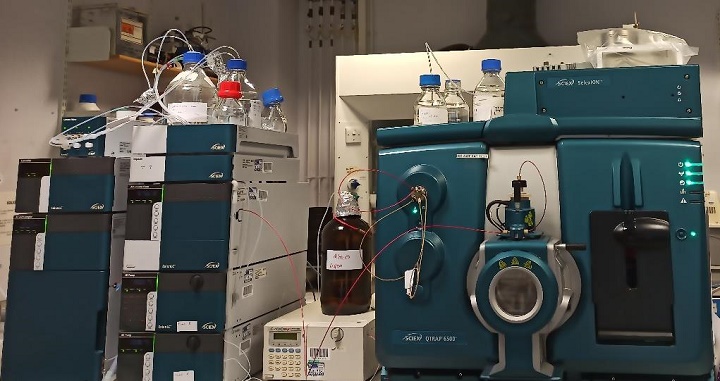Joining the fight against COVID -19
The global coronavirus pandemic has presented significant challenges to the continuation of scientific research but has also provided new opportunities. Whilst much preclinical laboratory work at Pain Centre Versus Arthritis was on temporary hiatus during the first UK lockdown, we were able to use this time to analyse existing data sets, write papers and theses, and some researchers even applied their skillsets to join the fight against COVID-19. Since returning to the lab in the summer, new COVID-safe practices have enabled the group to get most research projects back up and running, and these studies were able to continue throughout lockdown 2.
Dr Peter Gowler’s work offers new insights into the role of 17-HDHA as a biomarker of osteoarthritis (OA) pain. Just one day before lockdown came into effect, we were able to send off valuable clinical samples to our colleagues in Germany to undergo next-generation RNA sequencing. The results of this analysis could lead to a future predictive clinical test for OA pain.
Dr Amanda Lillywhite, Sara Gonçalves, and myself, Dr Steve Woodhams, have been working on the link between high anxiety, OA pain, and opioid intake in a preclinical model, available online as a preprint ahead of publication. Helpful reviewers suggested some additional experiments, which are now underway, and we hope to publish this work in full in the New Year.
Other ongoing work includes a study correlating spontaneous OA pain with spinal neuronal network activity in aged rats, and another using super-resolution microscopy to probe anatomical correlates of OA pain in mice. Meanwhile, PhD student Jamie Turnbull has started a new project on serum lipidomics in COVID-19 positive patients. Jamie explains:
“During normal times, our research focuses on using an analytical method called liquid chromatography-mass spectrometry (LC-MS/MS) to measure bioactive lipids in biological samples from patients with osteoarthritis, with the aim of identifying associations with clinical phenotypes.
The bioactive lipid mediators we are interested in have diverse physiological roles, including a central role in the initiation and resolution of inflammation. Poor resolution of inflammation can drive the pathophysiology of many diseases, and is thought to be involved in the severity of COVID-19 symptoms.

The SCIEX Triple Quadrupole Linear Ion Trap (QTRAP) 6500 LC-MS/MS System
We have re-purposed our LC-MS/MS method, and collaborated with Dr Alex Tarr at Nottingham who has provided COVID-19-positive serum samples from patients with a range of clinical outcomes. Our aim is to measure several classes of bioactive lipids, both pro- and anti-inflammatory, to identify whether levels are elevated or supressed in COVID-19 patients. As clinical outcomes are known, we can then investigate whether these changes are associated with successful or poor recovery, and potentially provide biomarkers of clinical prognosis to aid decision making on treatment options.”
This project is a collaborative effort involving the Biomedical Research Centre in Nottingham, and co-ordinated by Pain Centre co-director Professor Victoria Chapman. The work will be conducted by several members of Professor David Barrett’s analytical group in the School of Pharmacy (Senior Research Fellow Dr Catharine Ortori, Postdoctoral Research Fellow Dr Rakesh Jha, & PhD student Jamie Turnbull), with clinical samples provided by Assistant Professor Alex Tarr (Medicine & Health Sciences). We anticipate exciting data to report from this study in the near future.